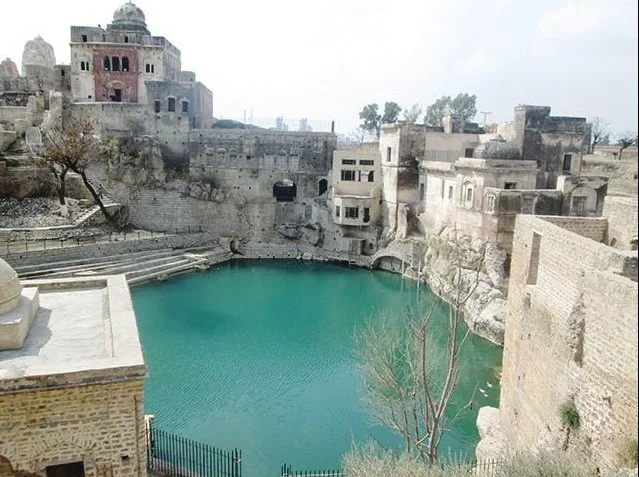Brahmanyan
Active member

There is a holy pond in Pakistan along with hindu temple complex in Katas raj. This ancient Hindu Temple complex is situated 40 Kms from Chakwal city in the District of same name in Punjab, Pakistan. The locals call the complex as “Qila Katas Hindhu mandir".The main temple is a dedicated to Lord Shiva. It is said that the temple has been in existance prior to the days of Mahabharata and the Pandavas have spent substantial part of their period of exile at this holy place. It is also believed that this is the pond where the famous dialogue between the Yaksha and King Yuthishitra known as "Yakshaprasnam" had taken place.
As per the mythological account origin of this temple and tank is related to Sathi devi's death. It is believed that after the death of his beloved consort, lord Shiva shed tears so much and so long that the tears from one eye of the Lord is said to have created the holy pond at Katas, ( Keta-aksha in Sanskrit means 'weeping eye',). And tears from the other eye has created the holy tank at Pushkar, near Ajmer, Rajastan.
According to historians, during Gandhara age, scholars from many parts of the world have visited Katas raj to study in the famous University established here.This is the place where the famous Persian Scholar Al Bairuni, who had written " Kitab- Al-Hind",after exploring the religious faith practiced in India had spent some period of stay to learn Sanskrit in the linguistic University, established there. Chinese traveller Hiuen Tsang said to have visited this place around 630 AD and mentions about Katas in his writings. According to one account most of these temples were built by Hind-shahi kings (650-950 AD) driven from Afghanistan by their ethinic cousin Mahmud of Ghazni, they fled the region and set a base in Katas.
Prior to partition in 1947 , this Temple complex has attracted tens and thousands of Hindu pilgrims from the sub-continent, and other parts of the world, through out the year. However after the partition the flow subsided and virtually came to an end after 1965 war. In 2005, at the invitation of General Musharraf then President of Pakistan, Shri L.K.Advani visited Katas Raj to launth the renovation program of Katas Raj Temple complex initiated by the Government of Pakistan. And the Indian government was quick to dispatch an Archaeological Survey of India team to survey Katas Raj and facilitate a whistle stop tour of Indian temples for Pakistani archaeologists. Accordingly the Pakistani delegation led by the Punjab Archaelogy Director General Oriya Jan Maqbool was on a 10 day trip to study Hindu architecture and customs, and visited several important Temples in India. The first three year phase of renovation was the complex at the cost of Rs 60.3 million was completed in 2007. A "Siva Linga" was installed and consecrated on February 16, 2007.
Brahmanyan,
Bangalore.
